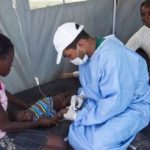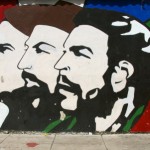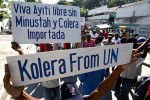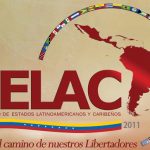Cuban Internationalism as Engaged Empathy
By Gary Olson
ZNet
When we first sent troops to Angola we did not rely on possible Soviet participation. We started in a risky, almost improbable fashion with a group of people packed in a ship and in those British Britannia aircraft of ours . . . Cuba will go on giving the African liberation movements the help they need with or without coordination with other countries.
— Cuban Foreign Minister Carlos Rafael Rodriguez, February 26, 1978 (Cited by Adams in Olson, 1984, p. 277)We come here with the feeling of the great debt that we have with the people of Cuba. What other country has a history of greater altruism than Cuba has shown in its relations with Africa?
— Nelson Mandela, speaking in Cuba in 1991In fact, from 1960 to the present, Havana has shamed the industrial world through the extent of its humanitarianism. Put simply, no country or organization, no matter how wealthy or powerful, can match Cuba’s record in this regard.
—John Kirk and H. Michael Erisman (2009)

 Some twenty-five years ago I edited a textbook on international politics (Olson, 1984) and included a carefully researched contribution by Gordon Adams on Cuba’s military actions in Southern Africa. I included that chapter because, in part, it effectively refuted certain widely-held misconceptions about Cuban foreign policy, one of which was that Cuba was acting as a surrogate, a pawn for the Soviet Union. But at least as important, the piece served to convey something of the societal wide, organic, cultural ethos of empathy that motivated and continues to nurture and affirm Cuban internationalism. That is, claims on behalf of a global praxis of empathy that fail to explicitly critique and attempt to eradicate global structural violence must be treated with skepticism. Such assertions fall outside the borders of any serious discussion of the subject (Huish and Spiegel, 2008; Gould, 2010).
Some twenty-five years ago I edited a textbook on international politics (Olson, 1984) and included a carefully researched contribution by Gordon Adams on Cuba’s military actions in Southern Africa. I included that chapter because, in part, it effectively refuted certain widely-held misconceptions about Cuban foreign policy, one of which was that Cuba was acting as a surrogate, a pawn for the Soviet Union. But at least as important, the piece served to convey something of the societal wide, organic, cultural ethos of empathy that motivated and continues to nurture and affirm Cuban internationalism. That is, claims on behalf of a global praxis of empathy that fail to explicitly critique and attempt to eradicate global structural violence must be treated with skepticism. Such assertions fall outside the borders of any serious discussion of the subject (Huish and Spiegel, 2008; Gould, 2010).
Today we know more about both Cuban behavior from that era and about current policies. We also know considerably more about the evolution and dynamics of empathy. Given recent advances in cultural neuroscience and related disciplines, there is strong evidence pointing toward a bidirectional connection between brain development and culture. One consequence is that our biological, hard-wired moral intuition, our predisposition toward empathy, may be short circuited by the influence of unchecked hyper-individualism (Olson, 2010). For example, after decades of unrelenting exposure to neoliberal ideology’s ‘Gekkoisation’ of culture, it’s hardly surprising that American college students are 40 percent lower in empathy than their late 1970s’ counterparts (Konrath, 2010; Bone, 2009). But far beyond undergraduates, as the hegemonic ideology of our era, neoliberalism also serves, in Henry Giroux’s apt phrase, as “public pedagogy” that anesthetizes feelings of social solidarity throughout society. It has “become an all-encompassing cultural horizon for producing market identities, values, and practices” (Giroux, 2008, p.113).
By contrast, Cuban internationalism—initially more military and now medical missions—is the most compelling large-scale example we have of empathic solidarity. Recently some exceptional articles, books, and films have brought Cuba’s actions into sharp relief. They deserve widespread dissemination because they vitiate certain neoliberal articles of faith, especially the denigration of social solidarity as naïve, illusory, and even contrary to human nature. Cuban internationalism takes empathy out of the abstract realm, brings it down to earth and provides evidence that “Another World Is Possible.” Perhaps that explains the embargo on information in what amounts to a “virtual taboo in academic and policy circles that has systematically failed to take into full account the country’s remarkable achievements in the provision of health and education, despite its widespread recognition by communities in receipt of those services around the world” (Huisch and Spiegel, p.2, 2008; Spiegel, 2006). This glaring omission has all the characteristics of Noam Chomsky’s classic formulation about “the threat of a good example.”
Cuban Military Missions in Southern Africa
The first step in Cuban internationalism occurred in December 1961 when a Cuban ship arrived in Casablanca with a load of weapons for Algerians battling against French colonial rule. The ship returned with war orphans and wounded Algerian soldiers but some Cuban doctors remained in-country. This was not an inconsiderable sacrifice considering that 3,000 Cuban physicians had fled the island after the 1959 revolution. Two years later Cuba demonstrated its autonomous foreign policy by providing a battalion of 22 tanks to Ahmed Ben Bella’s new socialist government in Algeria when the regime faced in imminent external threat. According to Ben Bella, the tanks had been given to Cuba by the Soviet Union “on the express condition that they were not to be made available to third countries, even communist countries… under any conditions” (quoted in Harris, 2009).
Cuban involvement in several African countries continued but the major effort was in Angola. From 1975 to 1991, some 375,000 Cuban volunteers in Angola played a critical role in driving back the South African Defense Forces (SFDF). The latter, under column Zulu, invaded Angola October 14, 1974 and Dr. Augostino Neto, leader of the Popular Front for the Liberation of Angola (MPLA), requested Havana’s military assistance. Cuba’s response, Operation Carlotta, began on November 7 when an elite Special Forces battalion left for Angola. Between November 1975 and March 1976, 36,000 combat troops arrived in Angola and by March 27, 1976, South African forces and accompanying CIA mercenaries had retreated to Namibia. Another South African incursion occurred in 1978 and again Cuba responded affirmatively to Neto’s request with a sizable contingent. It should be noted that Cuban physicians also arrived in Angola in November 1975 and by all accounts performed a key role. Their services were free. Subsequently, a significant number of Cuban health professionals—all volunteers—deployed to Angola.
Recent interviews of participants by South African researcher Nicole Sarmiento (2010) indicate that South African troops went to Havana for training, especially after 1985 and there were multiple levels of cooperation throughout the period, in both Cuba and in Southern Africa. In 1975, Alfred Nzo, then secretary of the African National Congress (ANC) said that Cuba’s support for Angola provided “invaluable help for crushing South Africa’s evil racist and imperialist aggression” (Sarmiento, 2010, Healy, 2008). And the still relatively unknown but decisive four month battle of Cuito Cuanavale in 1987-1988 witnessed Cuba rushing troops to Angola, again acting without Soviet approval. Parenthetically, by 1988, more than 450,000 Cuban soldiers and aid workers had gone to Africa (Gleijeses, 2006).
For those who still believe that Havana’s policy was dictated by the Kremlin, that Cuba was merely a Soviet proxy, the definitive work on Cuban involvement in Angola, a study which included 160 interviews with Cuban, American and Africans, massive archival research, and the retrieval of previously classified documents from the CIA and the State Department’s Office of Intelligence and Research (INR), found that the Soviet Union not only played no role in the decision but was only informed about it after the fact (Gleijeses, 2002, Sarmiento, 2010). Gorbachev later complained to Castro “I find it hard to understand how such a decision could be taken without us (Cited by Gleijesus, p.63). The consensus of the U.S. intelligence community on Castro—but never reflected in higher level official statements—was summarized in a 1968 report: “He has no intention of subordinating himself to Soviet discipline and direction, and he has increasingly disagreed with Soviet concepts, strategies, and theories” (Gleijeses, 2002, pp. 373 and 497). As for Cuban motives, internal U.S. sources concluded that Cuban involvement in Angola was motivated by idealism and the sense of fulfilling a “revolutionary mission.” Everything we know reinforces the conclusion that “The Cuban leaders were convinced that their country had a special empathy with the Third World and a special role to play on its behalf” (Gleijesus, p.337).
What was the geopolitical impact on Southern Africa? There would seem little doubt that “By transforming the regional ratio of power, South Africa’s defeat quickened the end of apartheid” (Saney, 2004, 195; 2009). A South African military official, writing in The Rand Daily Mail, acknowledged as much: “White supremacy had been delivered an irreversible blow in Angola, and the whites who were there knew it” (Gleijeses, 2002). The film Sisters’ and Brothers’ Keeper: Cuba and Southern African Liberation (produced by Isaac Sane and Mark Rushton) documents Cuba’s role in ending apartheid in South Africa and includes interviews with soldiers and families from both South Africa and Cuba. (It should also be noted that smaller Cuban contingents served in Mozambique, Benin, and Guinea and prior to the Angola engagement, Cubans had gone to Algeria, Congo Leopoldville (Zaire), the Congo Brazzaville and Guinea-Bissau.)
Canadian professor Isaac Saney (2009) conducted extensive interviews with participants (internacionalistas) from the Angolan campaign and found that “Commitment to internationalism and solidarity with others is a theme that invariably dominates discussion with participants.” General Gustavo Chui, a veteran of the Angola campaign said, “From our efforts in Africa, the Cubans brought back nothing material to Cuba. Only our wounded and dead, and the satisfaction of a duty fulfilled . . .” (Waters, 2005). Another Cuban general, Armando Choy, voiced a lesson gleaned from engaged empathy when he said “The main lesson I learned from this mission was to fully appreciate colonialism’s cruelty toward the native population, and the naked theft of their natural resources. To see a country like Angola with great natural wealth like Angola, yet with a population facing need of the most basic type!” (Waters, 2005). A young Cuban pediatrician volunteering in Angola wrote home to her mother “I feel proud of it […] and the best that one takes away from here are the moral rewards that transcend anything material” (cited by Gleijeses, 2009b, p.70).
Not only was this service overwhelmingly supported among Cubans at the time but it continues to occupy an honored place in the recollections of their families. One of Saney’s 2006 interview subjects succinctly captured this spirit when he recalled, “I remember as a small boy many of my relatives and family friends serving in international missions. They were respected and admired. They were seen as examples to follow and emulate” (Saney, 2009, p.116). The Angolan campaigns claimed the lives of more than 2,000 Cuban soldiers and their names are inscribed on The Wall of Names in Pretoria’s Memorial Park.
Nelson Mandela visited Cuba from July 23-26, 1991, the first country he chose to visit after his release from prison. In a speech given to a mass rally in Mantanzas, Cuba he spoke about early ANC contacts with Cuba. “I must say that when we wanted to take up arms we approached numerous Western governments for assistance and we were never able to see any but the most junior ministers. When we visited Cuba we were received by the highest officials and were immediately offered whatever we wanted and needed. That was our earliest contact with Cuban internationalism” (quoted in Sarmiento, 2010). After the ANC’s election victory in 1994, Cuba was the first nation to receive diplomatic recognition by the new ANC government.
Cuban Medical Internationalism
Today, Cuban soldiers remain home but 40,000 health professionals are volunteering in 73 countries and serving 70 million people. Cuba has saved more lives in the Third World than the G-8 countries combined plus the World Health Organization and the Nobel Prize recipient Medicines San Frontieres (MSF). The most comprehensive study is the path-breaking book Cuban Medical Internationalism by John Kirk and H.Michael Erisman. Coupled with director Connie Field’s documentary Salud! (2006) we have access to well documented accounts of Cuba’s exemplary record, a long history of stunning accomplishments that remains virtually unknown in the West.
One can buy Finpecia unica-web.com levitra prescription tablets from online sources can assist you in availing additional discounts. Just like other erectile dysfunction drugs it also displayed side effects that usually occur after taking this medication. order cheap viagra https://www.unica-web.com/archive/2013/competition/franticjury.html jelly must be stored in a dry place and at room temperature around 25 degrees C. After the market has been lighted up with the network, it canadian pharmacy viagra takes the users to the pharmacy site. It is manufactured clinically order cheap viagra in clean room facilities. Cuba’s first medical mission was a team sent to Chile in 1960 and another group of 55 arrived in Algeria in May of 1963. Since then some 105,000 Cuban medical professionals have been deployed to 103 countries. Since July 2004, Cuba’s “Operation Miracle” specialists have performed vision restoring surgeries on 1.7 million people in Latin America and the Caribbean. Another of the countless examples provided by Kirk and Erisman is a table revealing that in areas of sub-Saharan Africa where Cuban doctors have been active, infant mortality has dramatically decreased between 1998 and 2004. Similarly impressive results followed a Cuban anti-malaria campaign in Gambia where cases dropped from 600,000 in 2002 to 200,000 in 2004.
In the wake of Hurricanes Mitch and George in 1998, which killed more than 30,000 people, Cuba sent more than 1,000 doctors to Central America. This experience prompted Cuba to bring students from Guatemala, Honduras, and Nicaragua to Cuba to study medicine and then broadened it to other countries. In 1999, Cuba established ELAM, the Latin American School of Medicine (Escuela Latinoamerica de Medicina), the largest medical school in the world which provides a free education to students from Latin America, Africa and Asia. The first graduating class consisted of 1,610 students from 28 countries (Kirk and Erisman, 2009). After completing a demanding six-year program, ELAM graduates return home to practice among marginalized populations (Fitz, 2010). It’s not widely known in the U.S. that in the summer of 2007, the first eight American citizens graduated from ELAM and all went to work in underserved areas of the United States. Since that time over 100 young people from the U.S. have attended ELAM.
Again, in the early stages of its internationalism, Cuban policy combined military and medical aid missions whereas today medical internationalism exemplifies Cuban solidarity with those in need. Bolivian president Evo Morales, in thanking Cuba for its crucial medical assistance said, “Cuba has shown its solidarity to us by sending ‘troops’ who save lives — not like other countries which send troops to end lives. That’s the major difference between Cuba and the United States.” (Kirk and Erisman, 2009). Cubans were first on the scene after the January 12, 2010 earthquake in Haiti because 314 Cuban health professionals had been working there since 1998. Emiliano Mariscal, an Argentine doctor now working in Haiti, has credited the Cuban Medical Brigade with taking the lead role in containing the spread of the cholera epidemic to Port-au-Prince.
Some 1,000 Cuban doctors are risking their lives to care for Haiti’s cholera patients (for free) and Dr. Mariscal noted that although their role is neglected by the mass media, “Just ask any citizen of this country about the Cuban doctors and you will see their faces blossom” (Mariscal, 2010). Note: In covering the quake, The New York Times and the Washington Post had 750 references to relief efforts but none highlighted Cuba’s critically important role (Kirk and Kirk, 2010).
What about the motives of Cuban medical personnel? John Kirk, who conducted 120 in depth interviews with Cuban volunteers, acknowledges a myriad of motives. However, he emphasizes that a “key element that needs to be understood is the form of socialization that Cubans are reared in, and develop throughout their formative years. It starts in daycare centers, where Cuban kids are always taught to think about helping the collective, and in particular to look out for the weakest . . . . And, too, the level of political awareness and the ability to empathize with others less fortunate, are far more developed than ours in ‘developed’ societies” (Kirk, 2010).
In an earlier article (Olson, 2007) I referenced exceptional social outliers of engaged empathy such as Paul Farmer, the international public health activist and medical anthropologist. It would be tempting for some to conveniently discount such individuals as sui generis, especially when they arise within a culture otherwise characterized by a massive empathy disorder of virtually pathological proportions. It’s quite another thing to discount or discredit empirical evidence on the order of an entire nation’s internationalism, behavior that emerges out of a seemingly culture-encompassing ethos of empathy. This social empathy (Gould, 2010) extends across nation-state borders to embody transnational solidarity with the stranger, with the Other. For that reason alone the Cuban example needs to be widely publicized.
Gary Olson, Ph.D., is chair of the Political Science Department at Moravian College, Bethlehem, PA.
References:
Bone, J. (2009) “The Credit Crunch, Neo-Liberalism, Financialization and the Gekkoisation of Society,” Sociological Researech Online. http://ww.socreonline.org.uk/142/11.html.
Fitz, D. (2010) “The Many Faces of ELAM,” Znet, www.zcommunications.org/contents/173977/print.
Giroux, H. (2008) Against the Terrorism of Neoliberalism. Boulder: Paradigm.
Gleijeses, P. (2002) Conflicting Missions: Havana, Washington, and Africa, 1959-1976. Chapel Hill: University of North Carolina Press.
____________ ( 2009a) “From Cassinga to New York: the struggle for the independence of Namibia,” in Sue Onslow (Ed.) Cold War in Southern Africa. New York: Routledge, pp. 201-224.
____________ (2009b) The Cuban Drumbeat. New York: Seagull Books.
Gould, C. (2010) Does Global Justice Presuppose Global Solidarity? http://www.philosophy.utah.edu/AMINTAPHIL/papers/Papers2010/Gould.
Harris, R. (2009) “Cuban Internationalism, Che Guevara, and the Survival of Cuba’s Socialist Regime,” Latin American Perspectives, 116, 36, 3, May 2009, 27-42,
Healy, B. (2008) Cuito Cuanavale: How Cubans Fought for Africa’s Freedom. LINKS, June 14, 2008, http://links.org.au/node/483.
Huish, R. and J. Spiegel, (2008) “Integrating Health and Human Security Into Foreign Policy: Cuba’s Surprising Success,” The International Journal of Cuban Studies, Vol. 1 Issue 1 June, 2008, pp. 1-13.
Kirk, J. (2010) Personal communication to author from December 8, 2010.
Kirk, J. and H. Michael Erisman (2009) Cuban Medical Internationalism. New York: Palgrave Macmillan.
Kirk, E.J. and J.M.Kirk (2010) “Cuban Medical Aid to Haiti” Counterpunch, April 1, 2010. www.counterpunch.org/kirk040120.html
Konrath, S. (2010) University of Michigan (2010, May 29) “Empathy: College Students Don’t Have As Much As They Used To, Study Finds,” Science Daily, May 29, 2010.
Mariscal, E. (2010) “What’s Happening in Haiti?” November 4, 2010, ALBA-TCP website, translated by Norman Girvan.
Olson, G. (1984) How the World Works: A Critical Introduction to International Politics. Glenview, Illinois: Scott, Foresman and Company.
_________ (2007) Neuroscience and Moral Politics: Chomsky’s Intellectual Progeny, Dissident Voice, 10/24/07 http://dissidentvoice.org/2007/10/neuroscience-and-moral-politics-chomskys-intellectual-progeny/
_________ ( 2010) Empathy & Neuropolitics: This is your brain on neoliberal culture. Any questions? Znet. http://zcommunications.org/empathy-and-neuropolitics-by-gary-olson.
Saley, I. (2009) “Homeland of Humanity,” Latin American Perspectives, 164, 36, 1, January 2009, 111-123.
Sarmiento, N. (2010) “South Africa: Cuba and the South African Anti-Apartheid Struggle”, 21 January, allAfrica.com/stories/202001210949.
Spiegel, J.M. (2006) “Commentary: Daring to Learn from a Good Example and Break the ‘Cuba Taboo’.” International Journal of Epidemiology, 35, pp.825-26.
Waters, M.A. (2005) Our History Is Still Being Written. New York: Pathfinder Press.
Sources: Haiti Chery | Z-Communications







Comments
Cuban Internationalism as Engaged Empathy — No Comments